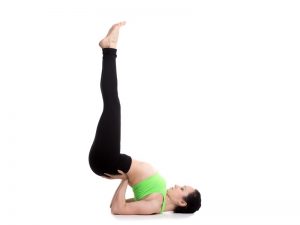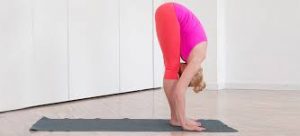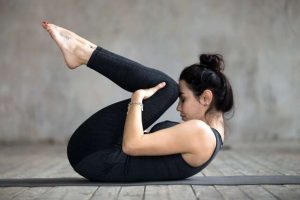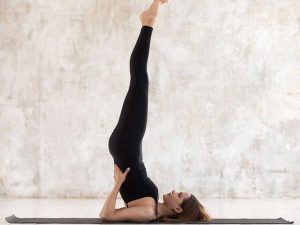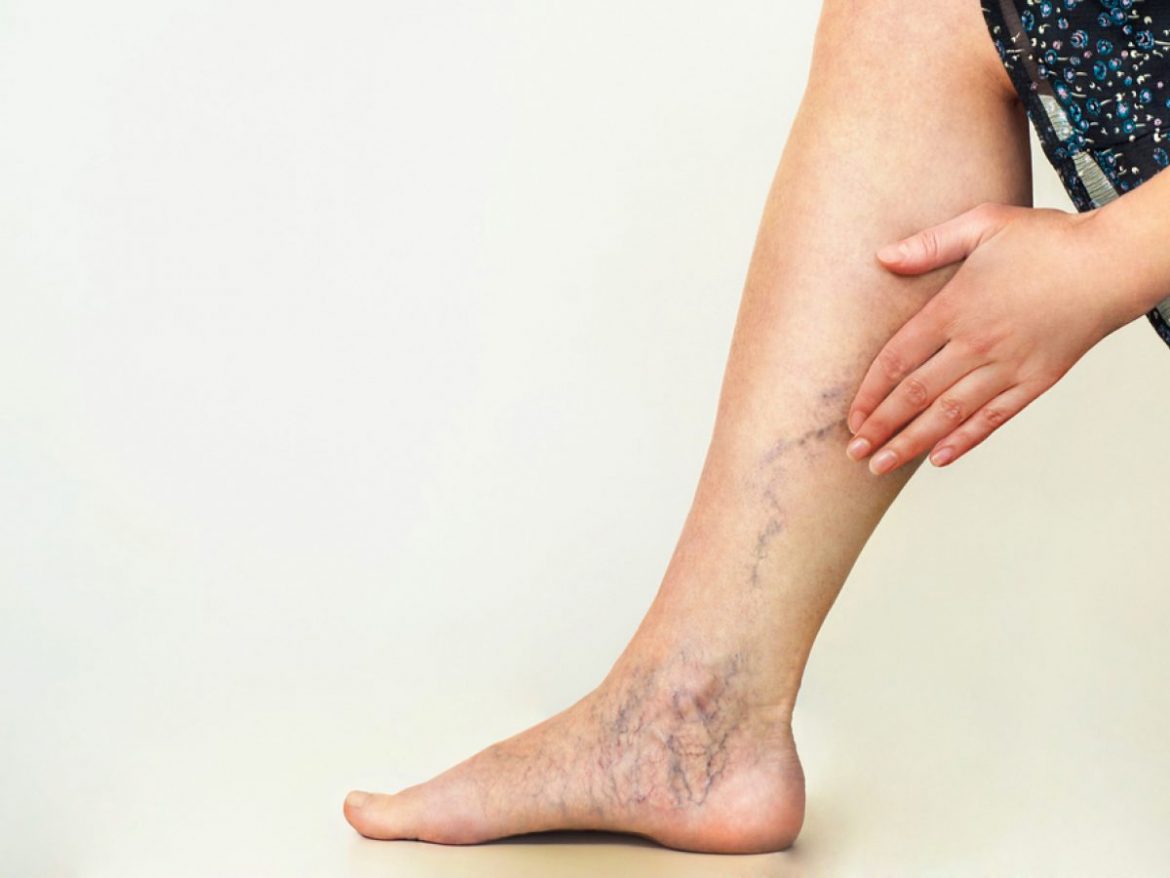
VARICOSE VEIN – YOGA ASANAS
- January 4, 2023
- Posted by Dr. Vaidya Karanvir Singh
- 0 Comment(s)
Yoga asanas are excellent way of improving blood circulation in the body which is the main cause of varicose veins. The recommended poses for varicose vein are usually leg elevation poses as they helps to drain accumulated blood and lymph into the heart. It also helps to alleviate the pain caused due to pressure.
Yoga also relaxes the body thus preventing further worsening of the condition. It improve overall condition and enhance the movement of limbs.
WHAT IS VARICOSE VEIN ?
Twisted and swollen blood vessels appearing just under the surface of skin in lower body is known as Varicose veins. It happens when the walls of veins are weak and valves in veins are not working properly , blood to backs up in the veins.
They normally occur in the legs but they can also develop in other parts of the body. This condition is very normal in today’s world due to sedentary life style.
WHAT ARE THE RISK FACTORS FOR VARICOSE VEINS ?
There are no proper causes of development of varicose veins but certain factors contributes in development of varicose veins . The factors are :
- Age : With age there is wear and tear of the valves in veins that helps to control blood flow. This wear and tear causes improper functioning of valves thus allowing back flow of blood into vein where it collects.
- Sex : Females are more at risk of developing varicose vein than males . It is due to hormonal changes in body before menstrual cycle or menopause as female hormones tend to relax walls of veins. Also hormonal treatments may increase the risk of varicose veins.
- Pregnancy : The blood volume increase during pregnancy in the body. This change helps the growth of fetus but also enlarges the leg veins.
- Obesity : Being overweight may contribute in development of varicose veins as excess weight puts pressure on the blood vessels in legs.
- Tobacco use : Use of tobacco products put the person at high risk of developing varicose veins.
- Family History : Having family history of varicose vein may increase the risk in the person.
- Overall Health : Some conditions like certain tumors or constipation tends to increase the pressure in the veins of lower limbs.
- Lifestyle : Sitting or standing for long period decreases the blood circulation. Wearing restrictive clothing like girdles or pants with tight waistband can decrease flow of blood.
WHAT ARE THE SYMPTOMS OF VARICOSE VEIN ?
Some common symptoms of varicose vein are :
- Dark purple or Blue veins
- Twisted and bulged appearance of veins like cords in legs.
- Heavy or achy feeling
- Throbbing, burning, muscle cramping and swelling in lower legs.
- Pain worsens with sitting or standing for long time.
- Itching around one or more veins
- Brown discoloration of skin around varicose veins.
WHAT ARE THE COMPLICATIONS ?
- Formation of ulcers on skin near varicose veins
- Blood clots
- Occasional bleeding if veins close to skin bursts.
PREVENTIONS :
- Eating high-fiber and low-salt diet
- Avoid wearing tight hosiery and high heels
- Regular exercising
- Changing sitting or standing position regularly
- Elevate the legs when sitting or lying down
- Maintain healthy weight.
AYURVEDIC APPROACH :
According to ayurveda the balanced three doshas are essential for healthy body. In Varicose vein blood vessels are involved so there is involvement of pitta dosha.
Pitta along with vata alone or vata and kapha get vitiated and disture the blood circulation and obstructs blood vessels of particular area . Due to this the blood get stagnent in vessels causing swellind and dilation there giving rise to Varicose veins.
HERBS :
- Ginger
- Onion
- Brahmi
- Garlic
- Guggul
- Amalaki
YOGA ASANAS :
- VIPRITA KARANI ( LEGS UP THE WALL POSE ) : It relaxes the legs by taking off pressure from them. It also helps to improve blood circulation and relieves the pain due to varicose veins. It also helps to flush out toxins from the body.
STEPS :
- Sit down across the wall and lie down with arms stretched out to sides
- Gently start raising both legs up the wall with soles facing upward.
- Palms of the hands should be facing downward
- Butts should be slightly away from wall and legs should make 90 degree angle with the upper body.
- Slowly close eyes and relax taking deep breaths
- Hold position for few minutes and then slowly return to initial position.
PRECAUTIONS :
- High blood pressure
- Cervical Problems
- Pregnancy
- Slipped disc
- Glaucoma
- Menstrual cycle
- Hamstring pain
- UTTAN ASANA ( STANDING FORWARD BEND ) : It helps to improve blood circulation in the body. It also stretches the muscles of legs especially calves and thigh muscles. Doing it regularly relieves the pain in legs.
STEPS :
- Stand straight with legs hip-width apart with both hands at sides.
- Inhale deeply
- Start bending forward from hips as you exhale
- Rest both hands on floor next to feet and chest should float over the feet.
- Hold the pose for 10-20 seconds while looking through legs..
- Slowly inhale and start rising to return to initial position .
PRECAUTIONS :
- Osteoporosis
- Lower back or neck injuries
- Scoliosis
- High or low blood pressure
- Severe migraine
- Pregnancy
- Menstrual cycle
- PAWANMUKT ASANA ( WIND RELIEVING POSE ) : It helps to move around stagnant venous blood and lymph. It helps to loosen muscles in the knee area. It also helps to relieves fatigue and cramps in the legs.
STEPS :
- Lie down on mat on your back and legs stretched forward .
- Slowly inhale and fold the knees and bring them towards chest while hugging them
- Lift the head and tuck your chin into chest to deepen the stretch.
- Hold the posture for a minute
- Gradually return to initial position.
PRECAUTIONS :
- Spine or knee surgery
- Ankle , shoulder or knee injury
- Pregnancy
- Menstrual cycle
- Piles
- Abdominal hernia
- Slipped disc
- SARVANG ASANA ( SHOULDER STAND ) : There full inversion of body thus blood circulation is enhanced and pool of blood and lymph drains into the heart. It also helps to relax the leg muscles.
STEPS :
- Lie down on your back and your hands by side.
- Gradually lift your legs , hips and back so that you come up high on your shoulders.
- Now place the elbows in such a position that it supports your body weight while making sure your weight is not on neck and head as it can lead to injury
- Point outer part of sole outwards and tighten muscles
- Hold the posture for 30-60 seconds and then slowly return to resting position
PRECAUTIONS :
- Headache
- High blood pressure
- Neck injury
- Pregnancy
- Diarrhea
- Menstrual cycle
- Hernia

Dr. Vaidya Karanvir Singh is the younger Vaidya in Chandigarh Ayurved & Panchakarma Centre. He is the fourth generation in his family who is practicing as a general consultant in Ayurved & Panchakarma treatment at Chandigarh. In his practice, he had treated more than 1 Lakh Plus patients worldwide.


